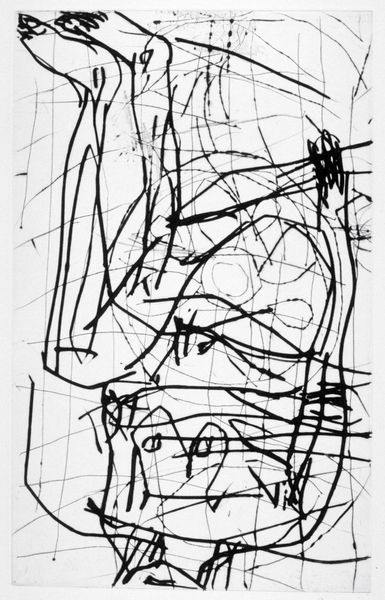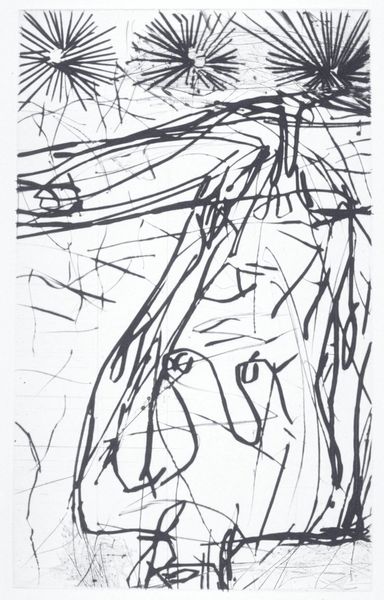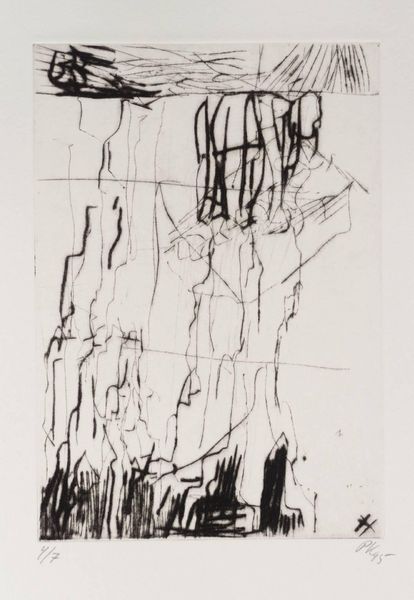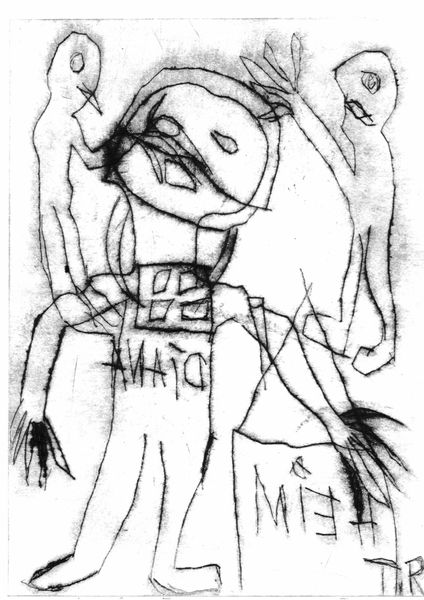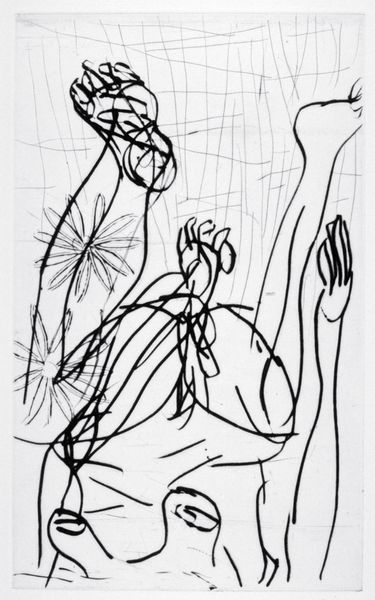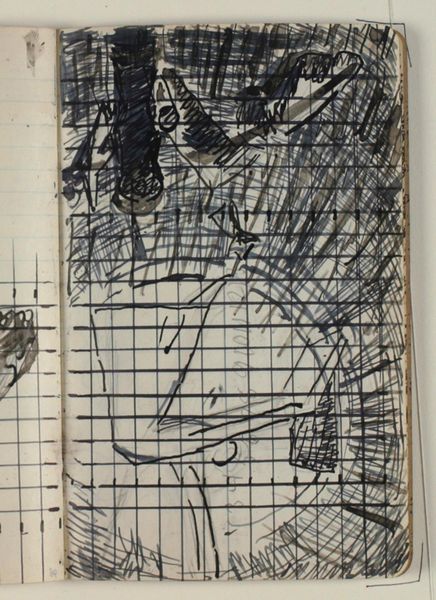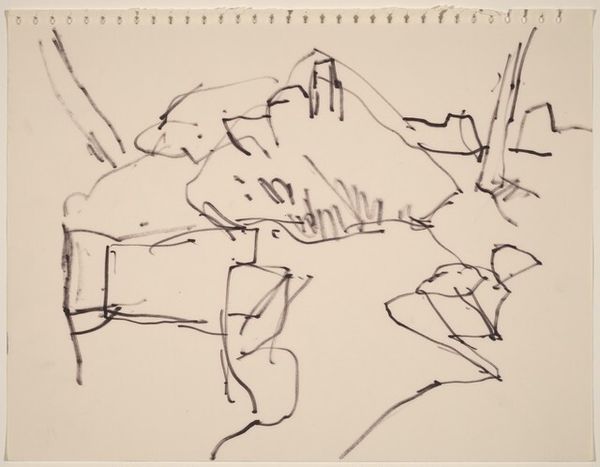
drawing, ink
#
portrait
#
drawing
#
figuration
#
ink
#
line
Copyright: Pablo Picasso,Fair Use
Curator: Take a moment with this, uh, intriguing sketch. It's "Niko Pirosmani," rendered by Picasso in 1972, using simple ink on paper. Editor: Chaotic. Visually, it's complete chaos. A vortex of lines barely clinging to any representational form. Is that a person? Curator: Indeed. Picasso’s rendering of the Georgian painter Pirosmani. Though, I admit, the resemblance is...abstract. Picasso was always drawn to artists outside the mainstream, those untouched by academic tradition. Think of this portrait, not as a likeness, but as an emotional echo. A tribute. Editor: I'm picking up anxiety more than tribute. Look at how Pirosmani's face is obscured, almost caged by those frantic lines. What are those shapes clustered by the midsection? Are those supposed to be clothes? And what is that shape? A strange box or sign in his chest or abdomen area. And the perspective is... non-existent. Curator: Ah, but the genius lies in that deconstruction, don’t you think? Picasso strips Pirosmani bare, to his essential, untamed spirit. Look at the feet, those almost whimsical shoes suggesting a folk artist rooted in, maybe even dancing with, his culture. Editor: There's certainly a tension here, maybe one that embodies an outsider grappling with both recognition and misrepresentation. Picasso's fame versus Pirosmani's relative obscurity certainly plays into how we read it now. This is from the early seventies, right? Curator: Yes. Editor: Given what was going on during that time with civil rights and protests, this kind of visual resistance almost reads as a deliberate political statement of sorts. I read that he was drawing in a lot of different styles then; the fact he renders Pirosmani like this speaks volumes, a commentary of social issues and identity, or rather a deconstruction of it, and who is at the forefront in representation. Curator: See, that’s precisely what I find fascinating. Art doesn't exist in a vacuum; the cultural currents always seep in. So, this little drawing isn’t just about one artist honoring another, but about questioning what legacy really means, and the stories we choose to elevate. It almost becomes a broken mirror. Editor: Absolutely, broken indeed. Though I am not sure I entirely believe that Picasso had thought this deeply about this, perhaps there are hidden clues or not that would show the complexity of its story. Anyway, the way we are interpreting art from different cultural perspectives, through history and political context, brings out unexpected stories that we often do not expect. Curator: A powerful demonstration, indeed, that art really never stops talking, so long as we’re still listening.
Comments
No comments
Be the first to comment and join the conversation on the ultimate creative platform.
